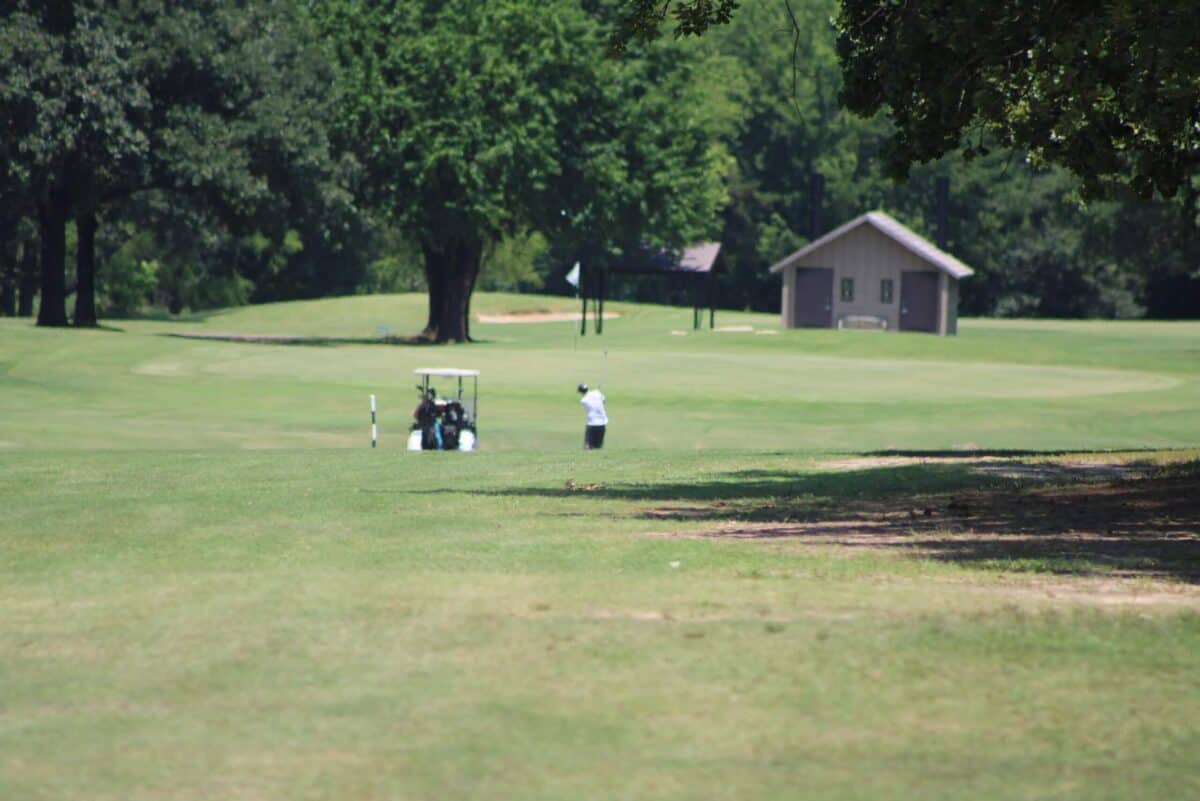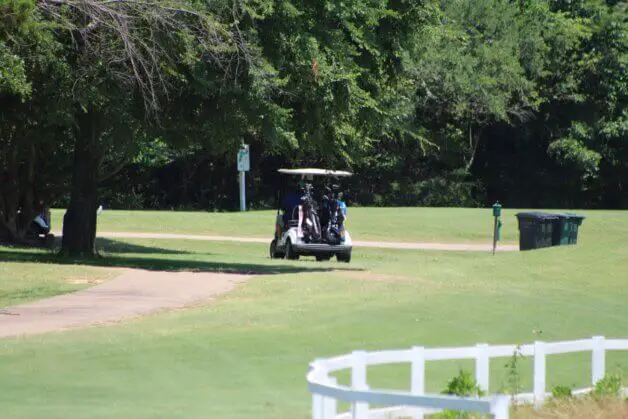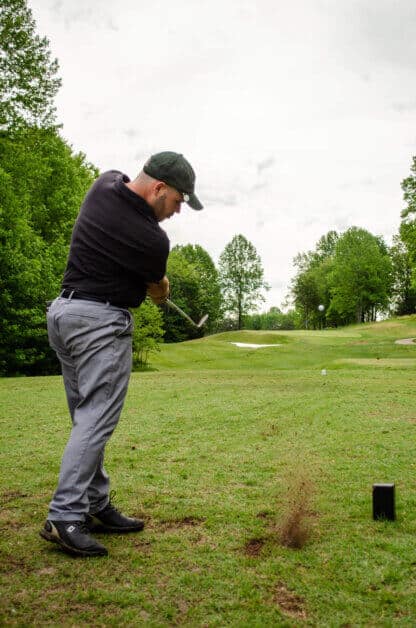How do you hit a beginner driver? Yes, beginners’ drivers are different. They’re longer with a bigger clubhead. Where hitting with a driver can sometimes be easier for golfers, many find it overwhelming due to the length of this club.
You can find the best beginner driver from the market, but the big question is how do you hit a beginner driver? To get the best results from a beginner driver, position the ball and the tee closer to your front leg, tee it up high enough, take a wide, balanced stance for a perfect swing and finally, hit up the ball on impact.
For the position of the feet, lengthen them more than you do with the iron, which means a little wider than the shoulders. The knees are slightly bent at the level of the legs because the club is longer.
These steps seem complex, but you’ll understand why hitting a driver is different once you try them. These steps will give you consistency, precision and more distance.
Let’s discuss these steps in detail, explaining the features of a beginner driver and other aspects that influence your hit!
What is a Driver?
The driver is composed of a graphite shaft. This is the golf club that you will use at the start of the holes. It allows the golf ball to be sent the farthest. Its opening is generally between 8 ° and 13 °.
The driver has the longest shaft and smallest bag opening, so it will be the most complicated to play for beginners. But, at the same time it is one of the most necessary clubs you need to take advantage of when you start playing golf.
This is why figuring out how to get and deciding on a good driver is the most difficult thing for beginners.
Some drivers for beginners:
- Callaway Great Big Bertha Epic. When it comes to popular brands in the golf equipment world, Callaway tops the list with Taylormade.
- Pinemeadow PGX offset.
- Cobra King F9.
How Do You Hit a Beginner Driver?
- Adjust your feet slightly wider than your shoulders
- Since a beginner driver is a long club, you need to line up the ball further forward in your stance
- Grab the club like a baseball bat with both hands, with your dominant hand on the front and club tilted toward the ball.
- The driver should be 10–12 inches away from your body. Create enough space for the driver by moving away from the ball.
- The right tee height for a beginner playing with a driver is 2.75 inches.
- Pick a target to aim, instead of just staring at the green. Choose a distant tree or bunker, line up your stance and prepare to swing.
- Wave the club back and forth to relax before starting your backswing. Don’t close too hard, or you’ll have a bad swing.
- For a perfect backswing, go slow and stay balanced. Pull the driver back slowly, above your head, pause for a split second. This prevents your center of gravity from shifting backward, thus, allowing optimal precision and power.
- Maintain your arm speed even after hitting the ball. A perfect swing lets the arms continue to swing even after impact. This sweeping tempo is the key to precision. Most beginners are all concerned about hitting the ball with force and then stopping their swing forcibly. If you’re doing this, you’re doing it the wrong way.
Choosing the Right Driver for a Beginner
The choice of the driver is an important step for a good start. It is used mostly at the start of each hole, being the most powerful golf club. It has the largest head that allows you to obtain an optimal length on a long course.
When choosing a driver, the two determining criteria are the loft and flexibility, whether you’re a beginner, average or experienced player. These two criteria decide which drivers your level of play the best.
For example, a beginner using a driver for the first time should go for a driver with a loft lower than 11.5° or 12° at least. Like this PGX Offset driver, an excellent choice when just starting the game.
A high angle enables the golfer to control the trajectory of the ball easily.
The flexibility of the shaft also allows a golfer to have the best possible performance. It is an important factor about the swing speed. The faster and wider your swing, the stiffer the shaft should be. On the contrary, the shorter and slower your swing, the smoother the shaft should be.
Several categories of flexibility exist, including Lady, Lady Light, Senior, Regular, Stiff and X-Stiff, often represented by a letter. These allow you to find the best combination according to your swing speed.
The choice of the shaft material is also crucial since it impacts directly on its weight. Two options are steel and graphite.
Each has its own characteristics that more or less suit the type of player you are. Beginners should go for the graphite shaft since it’s lighter than steel and is ideal for players with slow swing speeds.
On the contrary, a steel shaft is heavier and requires a higher swing speed, recommended for seasoned players.
Conclusion!
We hope the information above has answered the question, how do you hit a beginner driver? Drivers are indeed the longest and the most difficult clubs to play with for beginners.
However, if you follow the right tips and techniques and practice, you can improve your precision and distance with drivers in no time. It’s all about the right technique and posture that determines your driver hit and not your speed. Do not forget to share this information with your golfer mates, and let us know if it worked for you!
- Should Tee Boxes Be Level? - January 23, 2024
- 3 Hybrid Distance - November 15, 2023
- Innovations in Golf Mobility: An In-depth Review of Top Golf Scooters - October 12, 2023


